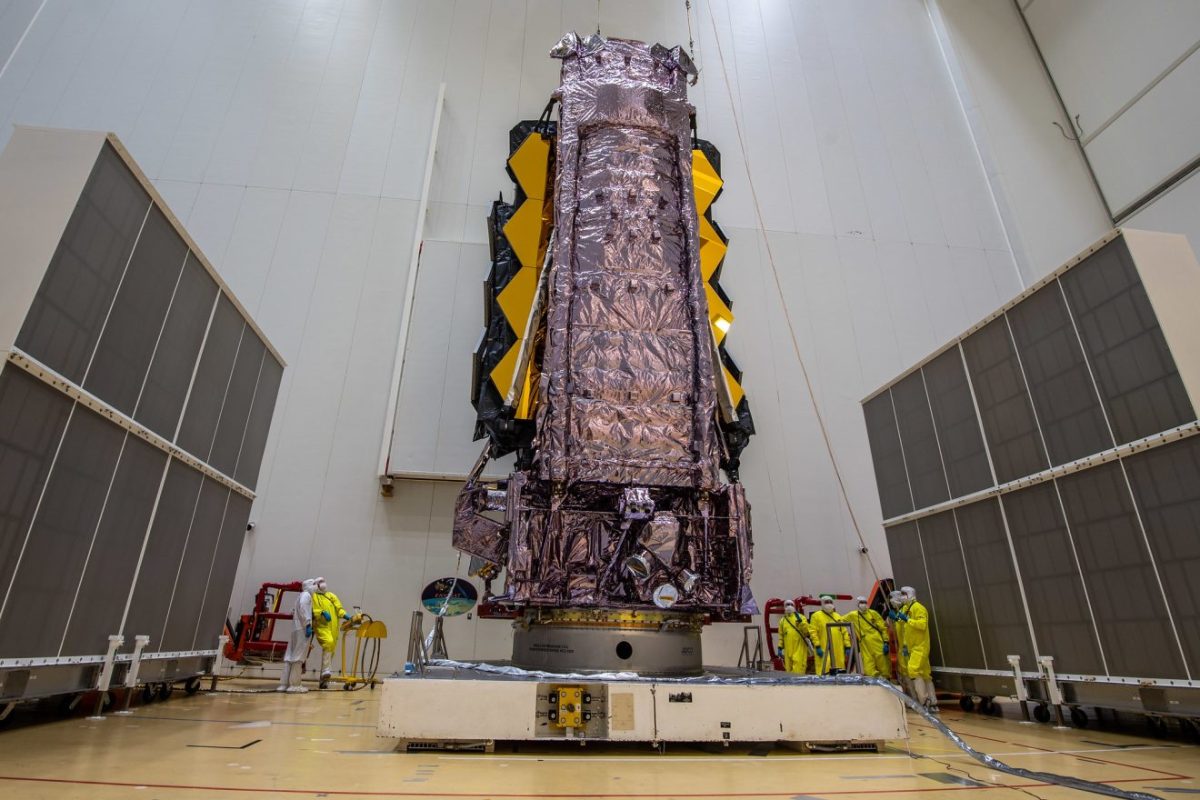Florida Tech Astrophysicist Ready for Webb Telescope’s Answers
Eric Perlman Eager to Learn More About Black Holes, Exoplanets
MELBOURNE, FLA. — A fledgling astronomer since early childhood and now an accomplished astrophysicist at one of the country’s leading research institutions, Florida Tech’s Eric Perlman is excited about Dec. 24.
That’s when the $10 billion James Webb Space Telescope is scheduled to launch from French Guiana. About six months later, after the device’s deployment and checkout from its position more than one million miles from Earth, the quest for answers to some of the biggest astrophysical mysteries should be underway.
“Humankind wants to know where it came from, its basic origin, and the James Webb Space Telescope is going back beyond the development of life to actually figuring out the longer term history that led to the planetary systems that have life in them, and the galaxies that house these planetary systems,” Perlman said.
Over his nearly 30-year career, Perlman has been awarded time on major telescopes including the Chandra X-ray Observatory and the Hubble Space Telescope. The latter had been the most powerful tool for space-based observations. However, with its 21-foot diameter mirror (the Hubble’s was 8 feet), Webb can make an observation similar to Hubble’s famous Ultra Deep Field observation, which took 16 days, in a speedy seven hours. More importantly, it can peer far deeper into space – more than 13 billion years ago.
Whereas Hubble observed mostly optical and ultraviolet wavelengths, Webb will primarily observe infrared light. Its extremely sensitive instruments will give scientists the chance to study some of the earliest stars that exploded in supernova events, spewing forth metals and other elements necessary to build planets and form life.
“I think the most exciting thing about JWST is any unknown and unexpected discoveries that it will make,” said Saida Caballero-Nieves, an assistant professor of astronomy and director of Florida Tech’s Olin Observatory. “Hubble made such great contributions and unexpected discoveries, like the Hubble Deep Fields, that I think JWST will be able to do the same.”
Perlman is especially intrigued by what Webb could tell us about black holes, which he has been studying for decades, as well as exoplanets and the earliest stars.
“If you want to answer these questions, you’ve got to build the tools that allow you to answer these questions,” he said.

Black Holes
An expert in black holes, Perlman is excited to get information on some of the earliest black holes found at the edge of known space, some 13 billion years ago. Because the light associated with these phenomena has “redshifted” into the infrared spectrum, and because the dust around them glows in the infrared, the Webb should be able to offer unprecedented information to observers.
“JWST is the unique and best telescope to look at these black holes,” Perlman said. “There’s really nothing else to look at them with.”
The information gleaned should help scientists determine how these black holes developed in the early universe and may very well alter current thinking about that process, and more.
“It would also directly affect our models of cosmology because black hole development is an important early stage in the evolution of the universe,” he said.
Exoplanets
With about 5,700 of these objects already identified, and thousands more that are candidates, Webb will offer the opportunity to get a better understanding of exoplanets. This will happen due to the telescope’s infrared sensing, which will allow it to see the planets even given their contrast with the brighter stars they orbit, and also because it will deploy direct imaging and spectroscopy to learn about an exoplanet’s color, seasons, rotation, weather and vegetation, if it exists.
“It’s figuring out the basic conditions on all of these exoplanets,” Perlman said.
Early stars
Previous research indicates that early galaxies appear to be rich in metals, but the thinking is they were in fact born without the presence of metals given that the Big Bang produced primarily hydrogen and helium. So where did the metals come from? Most likely, very early stars.
“These are all things that we want to know about. We want to know about the universe as it was at the very start. We also want to know about planets and stars in other galaxies. We can only do this in the infrared,” Perlman said. “We can only ask these questions in the infrared because that is the wavelength where the light is going to be brightest.”
Caballero-Nieves added, “JWST’s sensitivity will let us reach to unprecedented distances in our universe. This will allow us to understand the early universe as well as our “local neighborhood.” The instrumentation on the telescope allows for observations that we cannot do from the ground.”





